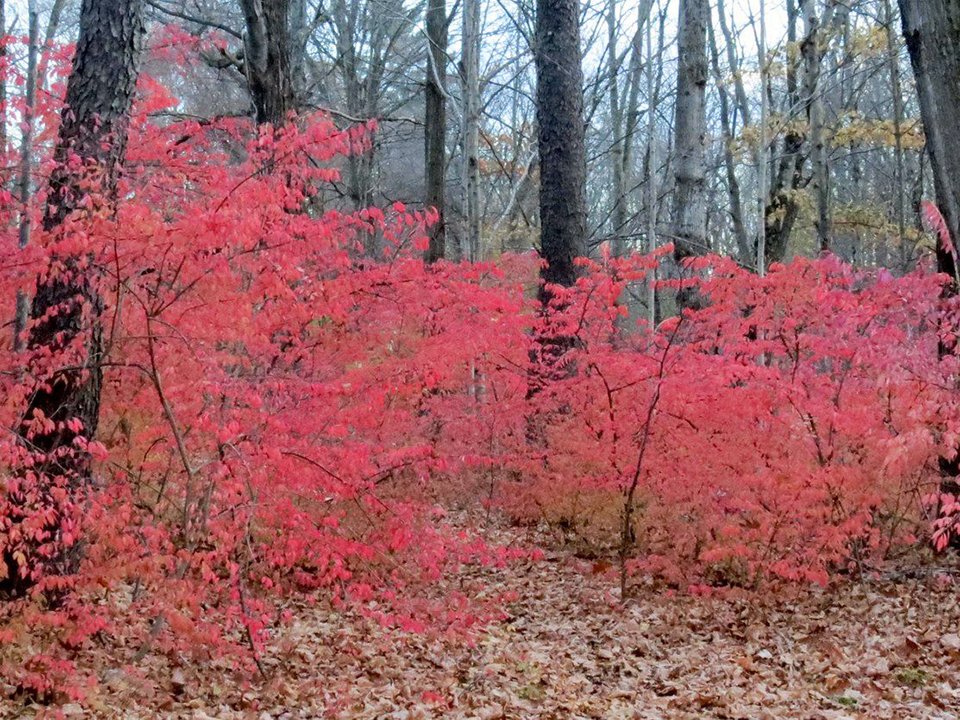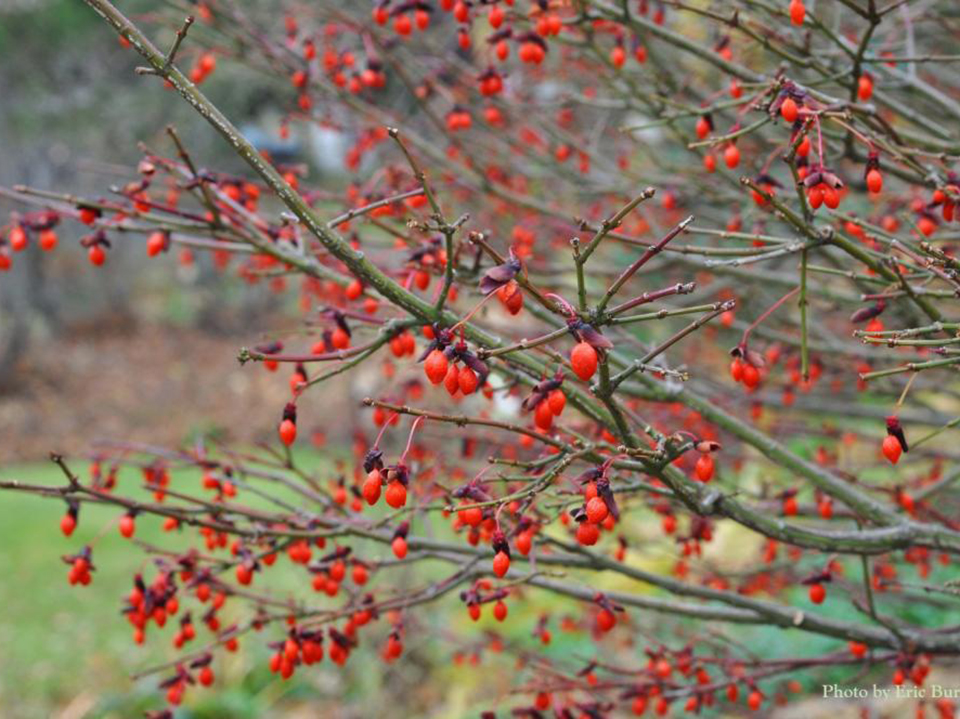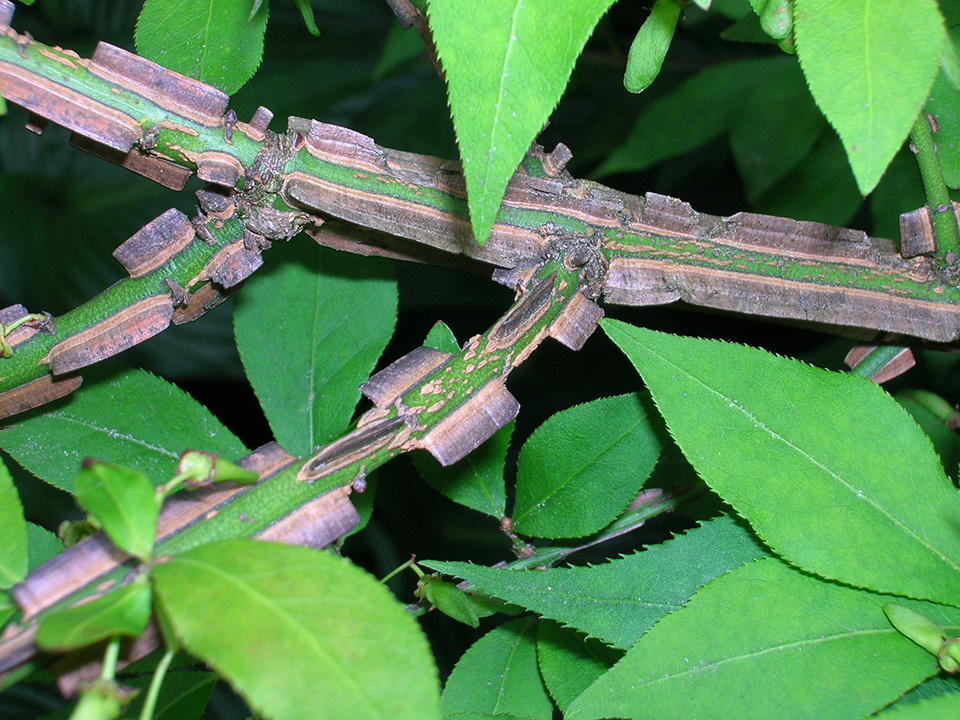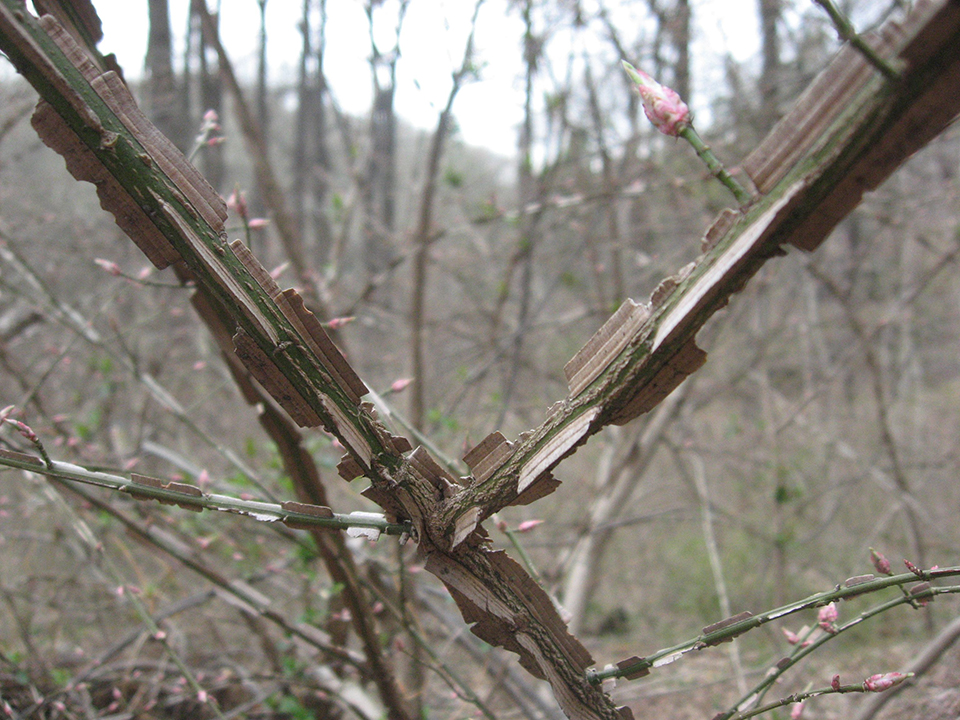
Burning bush invading a woodland. Fall is the best time to locate burning bush for removal.
Species Name: Euonymus alatus
Common Name: Burning Bush, Winged Euonymus
Origin: Native to northeast Asia, Japan, China, Korea
Distribution: Grows in the understory of woodlands throughout the northeast and upper mid-west south to Florida. Burning bush as an invasive plant is prohibited from being sold in Massachusetts and most of New England and is a regulated plant in New York State. It should never be planted.
Identification: Burning bush is typically a medium to large shrub 5 to 10ft tall but may reach 15 to 20 ft. It is fairly sow growing. It tends to have one to a few woody stems emerging from the roots with a strong forking habit that develops into a dense oval to rounded outline. Leaves are opposite and arranged in a flattened pattern along the stems. Twigs and young stems are light green in color fading to dull green in older stems. Twigs are lined with pronounced winged ridges running parallel to the stem that are unique to the plant. Fall color is a brilliant scarlet color. Fruits are bright orange.
Diagnostic characteristics:
Twigs and young stems are bright green.
Twigs have raised corky ridges unique to the species.
Leaves turn a brilliant uniform scarlet color in fall.
Fruits are a bright orange color easy to spot in late fall and winter.
Biology and Spread: Burning bush has been extensively planted as an ornament shrub for over a century and remains one of the most popular shrubs today. It can grow in full sun to deep shade and can tolerate a range of soil and pH conditions. It prefers well drained soils and does not like wet saturated soils. Its shade tolerance allows it to establish and dominate the understory of woodlands. It can be found growing in old fields, disturbed areas, road sides and most areas adjacent to human development. It produces an abundance of small orange fruits that are consumed and dispersed by birds.
Ecological threats: Burning bushes widespread use as an ornamental has allowed it to disperse into natural areas throughout its range. Its prolific seed production and shade tolerance allows it to out complete and displace native plants in woodlands. It has no natural disease or insect pests to limit its growth or spread.
Control methods:
1) Cut Stump Treatment:
Cut stump treatment is the best method for controlling large and small burning bush. A brush saw or small chain saw is the most efficient tool for cutting burning bush. The wood is quite hard and requires a power tool or sharp had saw to cut. Each cut stem needs to be treated with a herbicide to prevent resprouting. A 10% to 15% solution of glyphosate (the active ingredient in Round-up) is applied to the cut surface. A hand held spray bottle works well for applying the herbicide to the cut stem. Add a spray colorant to the bottle so you can tell which stems have been treated.
2) Foliar treatments
A foliar spray may be used where there are numerous small seedlings but generally is not recommended for controlling larger plants.
3) Manual Control
Pulling of burning bush is normally only used on very small plants or seedlings as the root system soon becomes too anchored to pull. A weed wrench may be use to pull a few plants but the low branching of the stems often precludes getting a clear grip on the stem. Had cutting using a had saw and loppers is also limited in usefulness because of the dense branching and tough wood.

Burning bush invading a woodland. Fall is the best time to locate burning bush for removal.

Abundant bright orange fruit is eaten by birds
iand dispersed into woodlands and natural areas.

Light green color and corky wings of
young twigs and branches are diagnostic.

Corky wings or ridges on twigs of Burning Bush